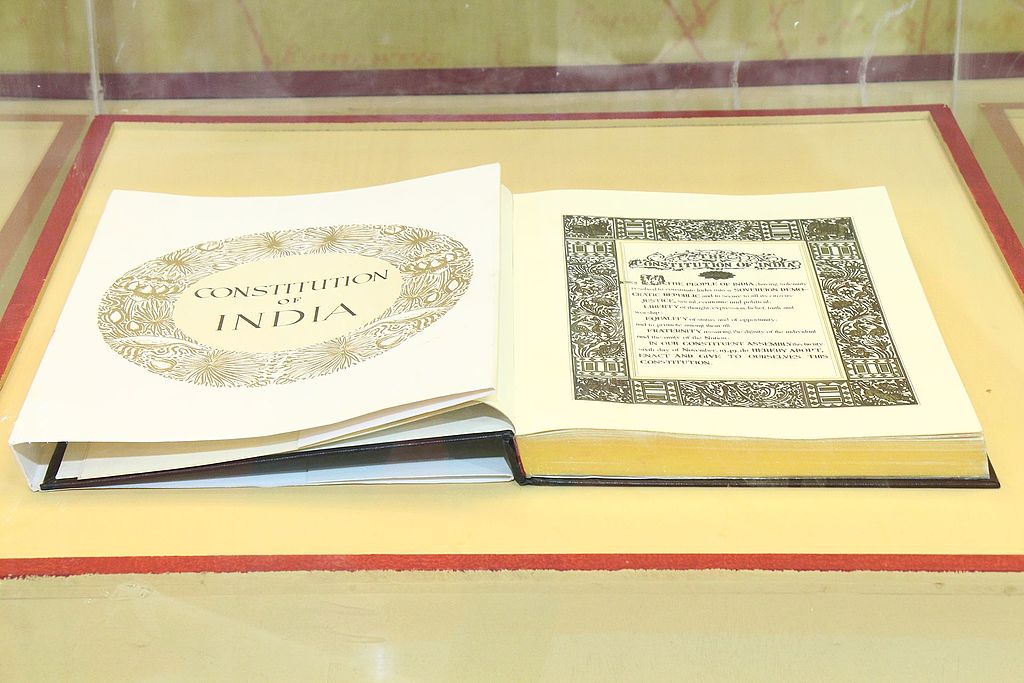
This blog dives deep into the concepts of federal and unitary constitutions, explaining their features, merits, and demerits. It particularly focuses on how India, while being a federal state, exhibits unitary features during emergencies. A must-read for UPSC aspirants aiming to strengthen their polity foundation.
Federal and Unitary Constitution: A Clear Comparison
A Constitution acts as the backbone of a country’s governance. One of its most critical features is the distribution of powers between different levels of government. On this basis, constitutions are often classified as federal or unitary. Let’s understand these two systems in a detailed and relatable manner.
1. What is a Federal Constitution?
A federal constitution is one in which powers are divided between a central (national) government and regional (state/provincial) governments. Each level of government operates independently within its own sphere of authority.
Key Features:
Dual government structure: Union and state governments.
Written and rigid constitution: Clearly defines the division of powers.
Supremacy of the Constitution: All laws must conform to it.
Independent judiciary: Resolves disputes between Union and States.
Bicameral legislature: Usually includes an upper house representing the states (like the U.S. Senate or Indian Rajya Sabha).
Examples:
United States
India
Australia
Canada
Why it Matters:
A federal system is especially useful for large countries with diverse populations, where regions may want autonomy over certain matters like language, culture, or law enforcement.
2. What is a Unitary Constitution?
A unitary constitution establishes a single central government that holds the supreme authority. The powers of regional or local governments (if they exist) are delegated by the central government and can be withdrawn or altered.
Key Features:
Single-tier government: Centralized control.
Flexible constitution: Amendments are easier to make.
Uniform laws: Same legal system across the nation.
Parliamentary sovereignty: The national legislature is supreme.
Examples:
United Kingdom
France
Japan
China
Why it Matters:
Unitary systems are suitable for smaller or culturally homogeneous countries, where strong central authority ensures uniformity and efficient governance.
3. Federal vs. Unitary Constitution: A Comparative Table
4. India: A Unique Federal Structure
India has a quasi-federal constitution — a mix of both federal and unitary features. This was necessary due to:
India’s vast diversity
Need for unity in administration
Occasional necessity for strong central control
Federal Features:
Written Constitution
Division of Powers (Union List, State List, Concurrent List)
Independent Judiciary
Bicameral Legislature
Unitary Features:
Single Constitution for Union and States
Emergency powers of the Centre
Appointment of Governors by the Centre
Strong Centre-State financial control
This hybrid nature allows India to function federally in normal times and unitarily during crises.
5. Importance of the Distribution of Powers
Whether federal or unitary, the way powers are distributed affects:
Governance efficiency
Accountability
Conflict resolution
Democratic representation
The key is to strike a balance between unity and autonomy, centralization and decentralization.
MCQs
1. Which of the following countries has a federal constitution?
a) Japan
b) France
c) India
d) United Kingdom
Answer: c) India
2. In a unitary constitution, the central government:
a) Shares power equally with the states
b) Has the power to withdraw powers from local governments
c) Cannot interfere in state matters
d) Has a rigid structure
Answer: b) Has the power to withdraw powers from local governments
3. The Indian Constitution is:
a) Purely federal
b) Purely unitary
c) Quasi-federal
d) None of the above
Answer: c) Quasi-federal
4. Which of the following is not a federal feature of the Indian Constitution?
a) Single Constitution
b) Written Constitution
c) Division of Powers
d) Independent Judiciary
Answer: a) Single Constitution
UPSC-Level Questions
Q1. The Indian Constitution is federal in structure but unitary in spirit. Discuss. (250 words)
Answer Hint:
Explain federal features: dual polity, division of powers, independent judiciary.
Explain unitary tendencies: Emergency powers, Governor's role, financial dependency.
Conclude with how the blend ensures unity and integrity of India while respecting diversity.
Q2. Compare and contrast the federal structures of the United States and India. What do the differences tell us about their political history and needs? (250 words)
Answer Hint:
U.S.: True federalism, states joined to form a union, dual citizenship.
India: Centre created states, single citizenship, stronger Centre.
Reflects different historical needs — unity in diversity for India vs. decentralization for the U.S.
Q3. In what situations does the Indian Constitution assume a unitary character? How does this impact the federal balance? (150 words)
Answer Hint:
During National Emergency, President's Rule, or Financial Emergency.
States lose autonomy; Centre can legislate on State List.
Useful in crises, but risks over-centralization if misused.
11-Jul-2025 02:29 PM
Explore the fascinating structure, origin, and dynamics of our Earth—from...
11-Jul-2025 02:18 PM
Understand the vital role of lysosomes and cellular transmission in...
11-Jul-2025 01:48 PM
A concise and exam-focused overview of Plasmolysis and Protoplasm, covering...
04-Jul-2025 12:46 PM
India’s education system is undergoing a major transformation to prepare...
02-Jul-2025 02:51 PM
Recent research suggests that the transfer of genes between fungi...
Leave a Comment